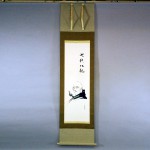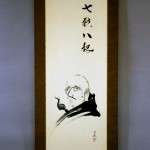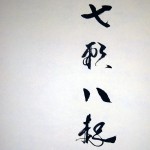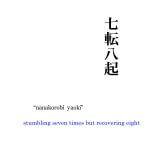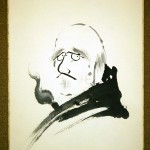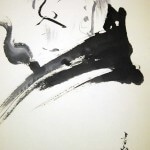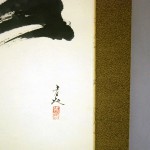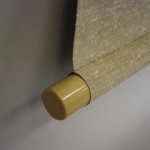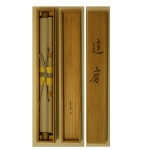Products Lineup
News / Blog
Other Menus
Kakejiku Hanging Scroll: Bodhidharma / Seika Tatsumoto - Daruma
- Product ID
- 0136
- Name
- Seika Tatsumoto
- Profile
1935-
Born in Kyoto- Size
- 590mm x 1900mm
- Roller End Material
- Ceramic
- Material of the Work
- Japanese paper
- Stock Condition
- Sold out
- Description
It is said that Zen was introduced to China by Daruma and was passed down even to “Rokuso Enō”(sixth leader Enou). Zen was further divided into The Goke Shichishū of Zen (five sects and seven schools derived from the original Zen Buddhism) such as the “Rinzai-shū” and “Sōtō-shū” sects. It also had a significant impact on religions in Japan. Emphasis is placed on Daruma in Zen, and sometimes the word “Soshi” (founder) is used to refer to him.
Based on the myth that Daruma’s arms and legs became rotten from sitting in the Zen sitting meditation of facing the wall for nine years, the Daruma-doll was created. This is still popular as lucky charms today. The Daruma-doll is a self-righting doll, so the phrase “nanakorobi yaoki,” which means stumbling seven times but recovering eight times, is often associated with Daruma.This is a work of Daruma painting and nanakorobi yaoki calligraphy perfected by Seika Tatsumoto. His Buddhist painting is very rare, but we can see his high degree of painting skill through his strengthening and weakening brushstrokes.



